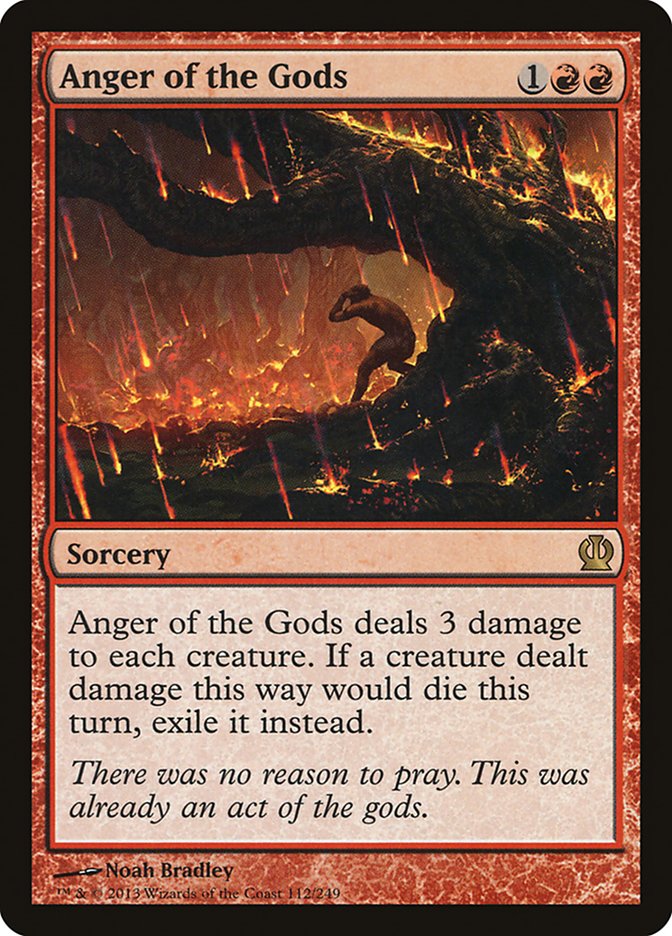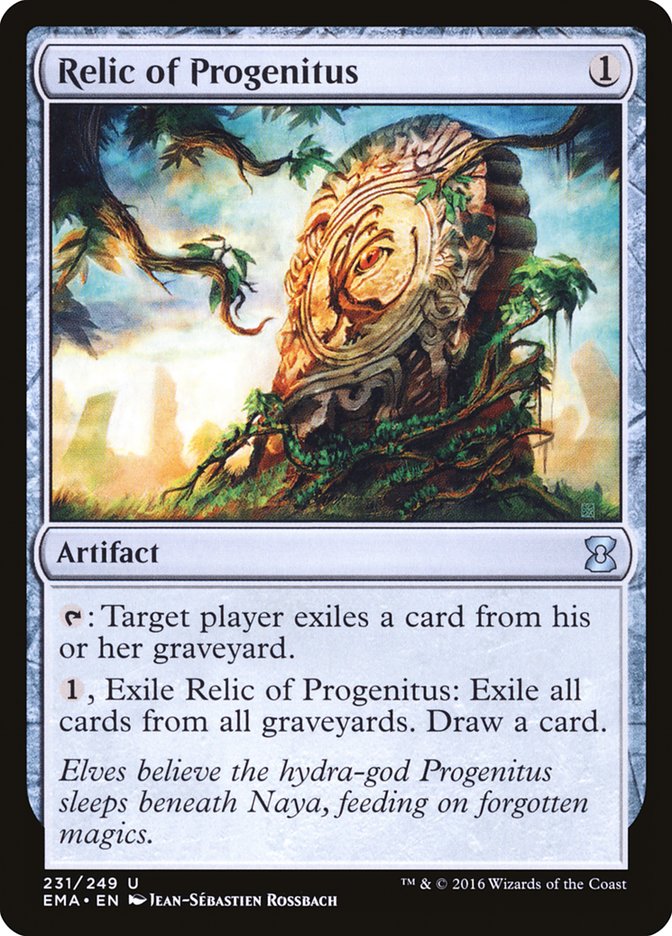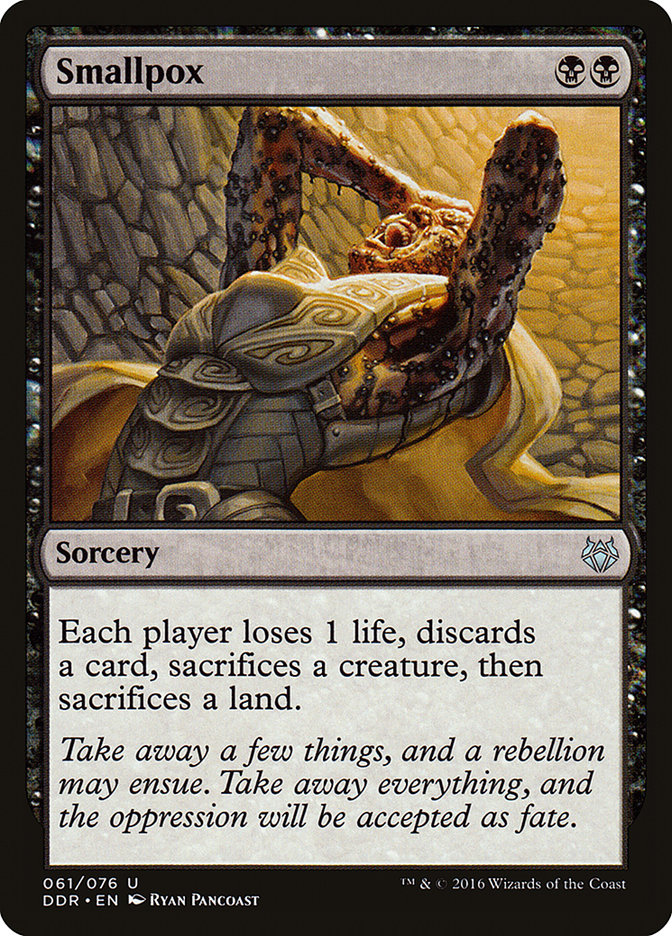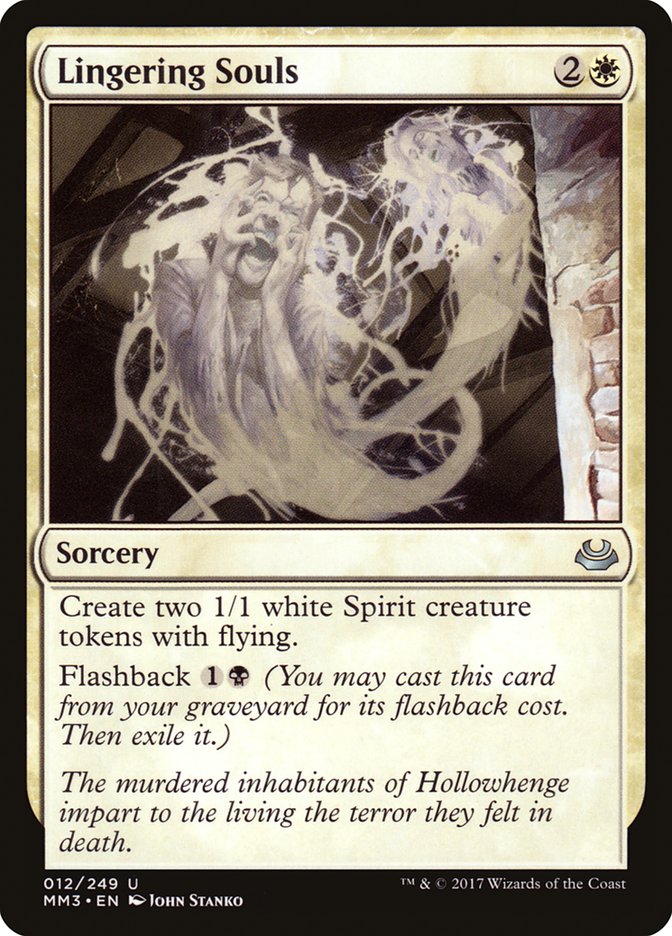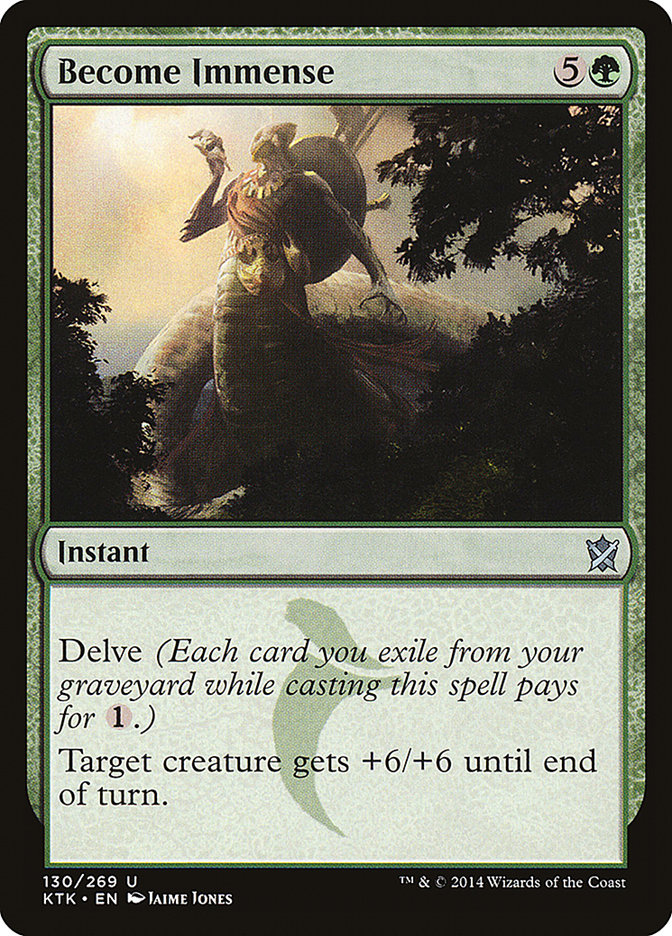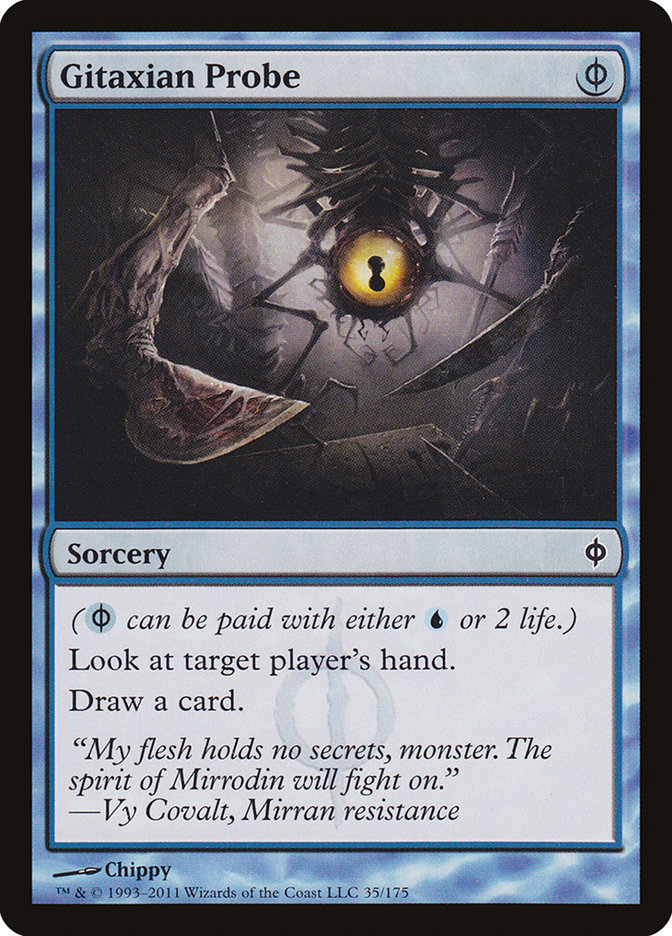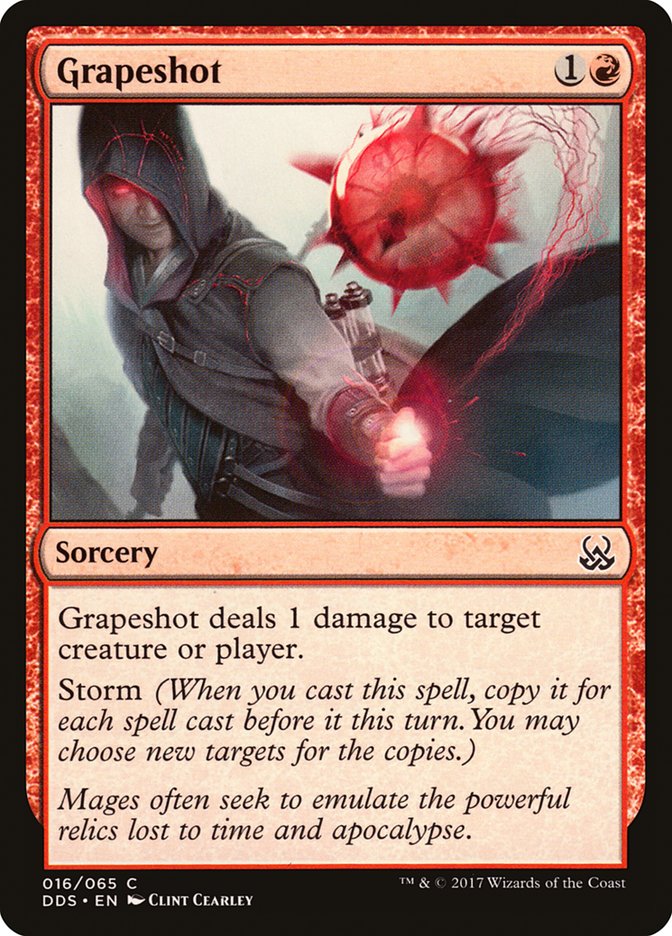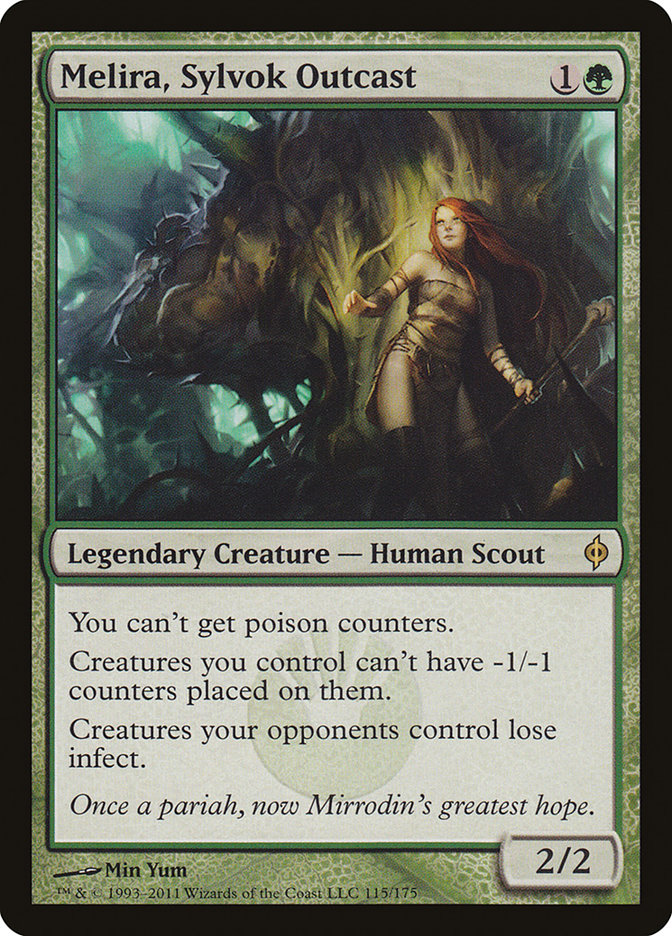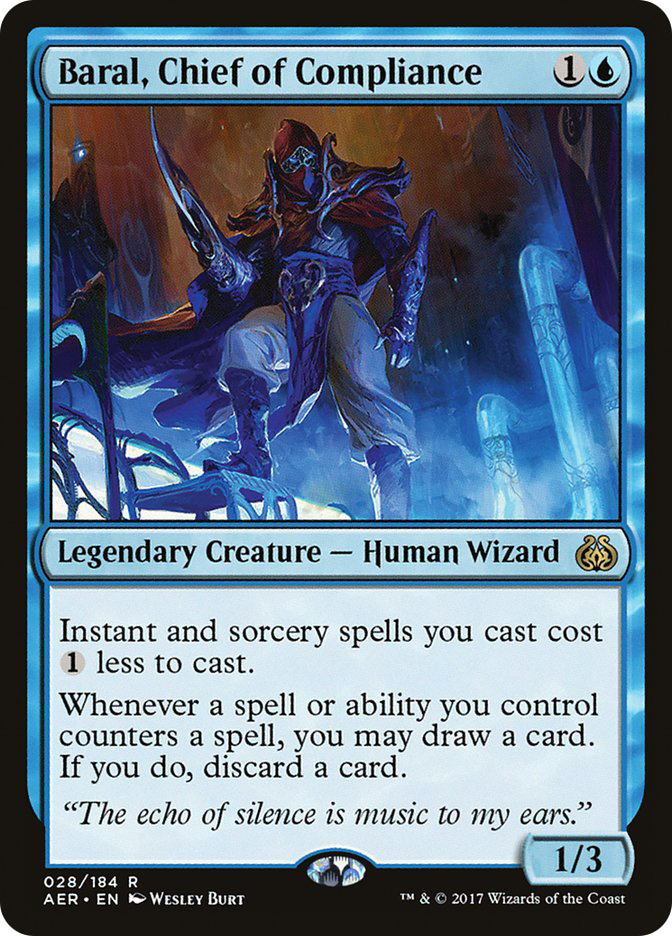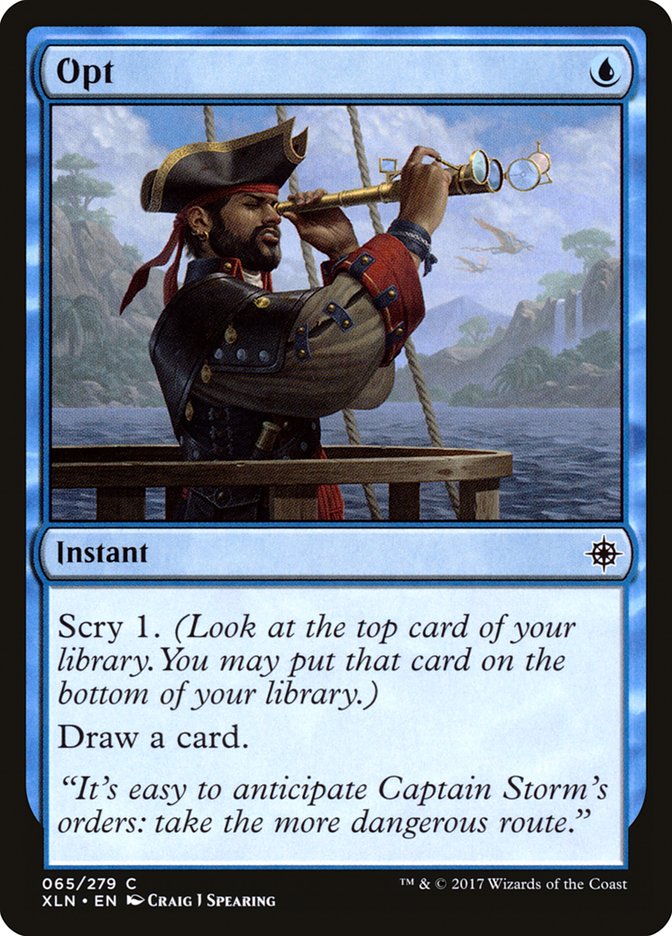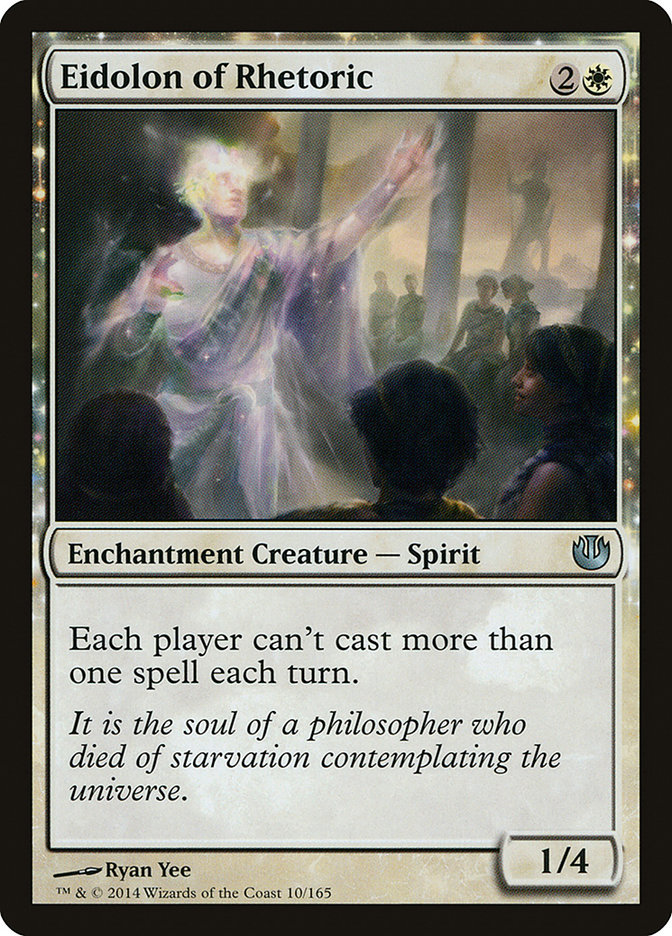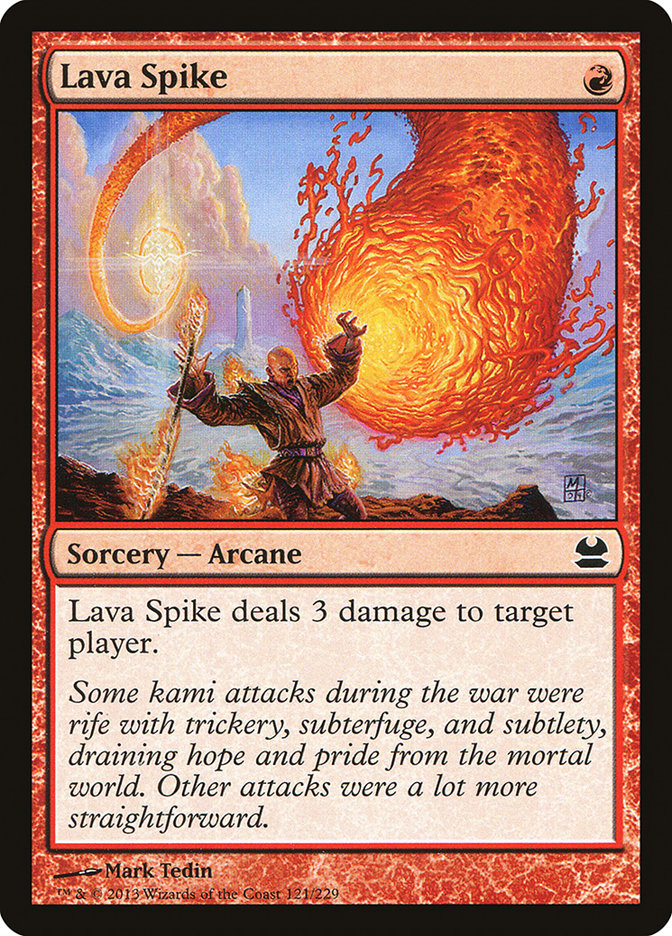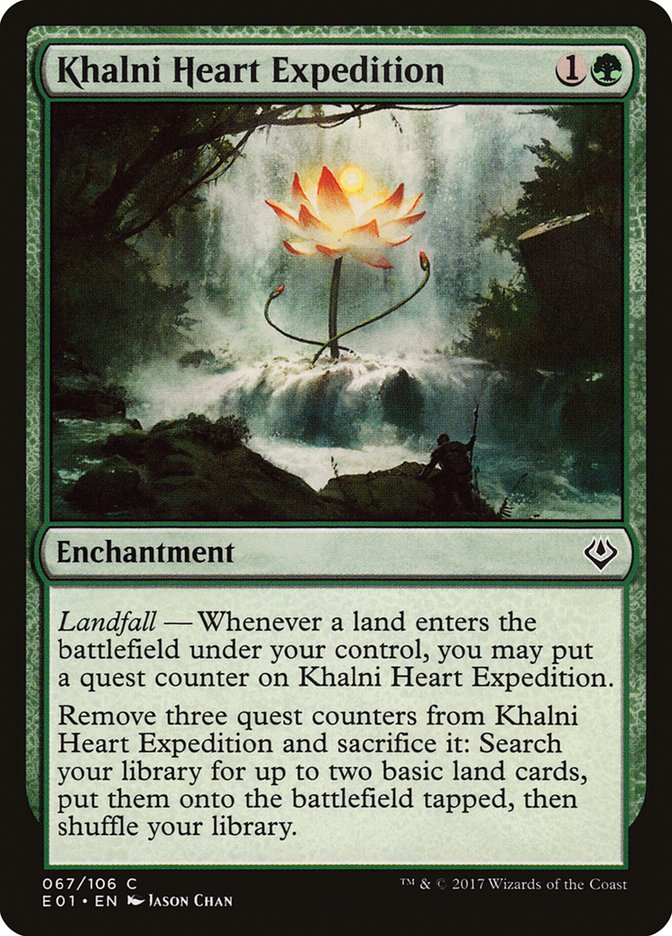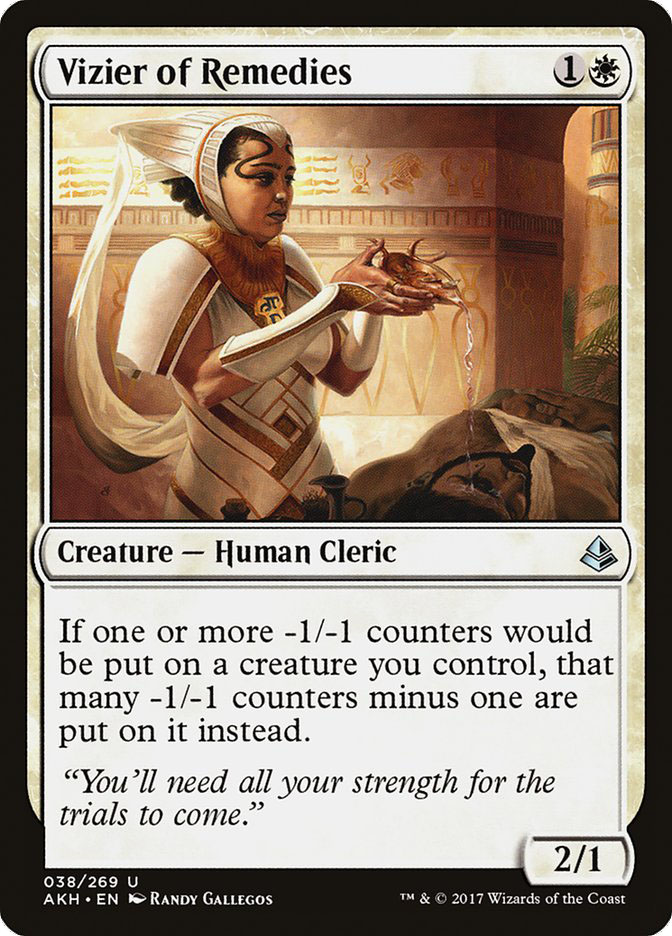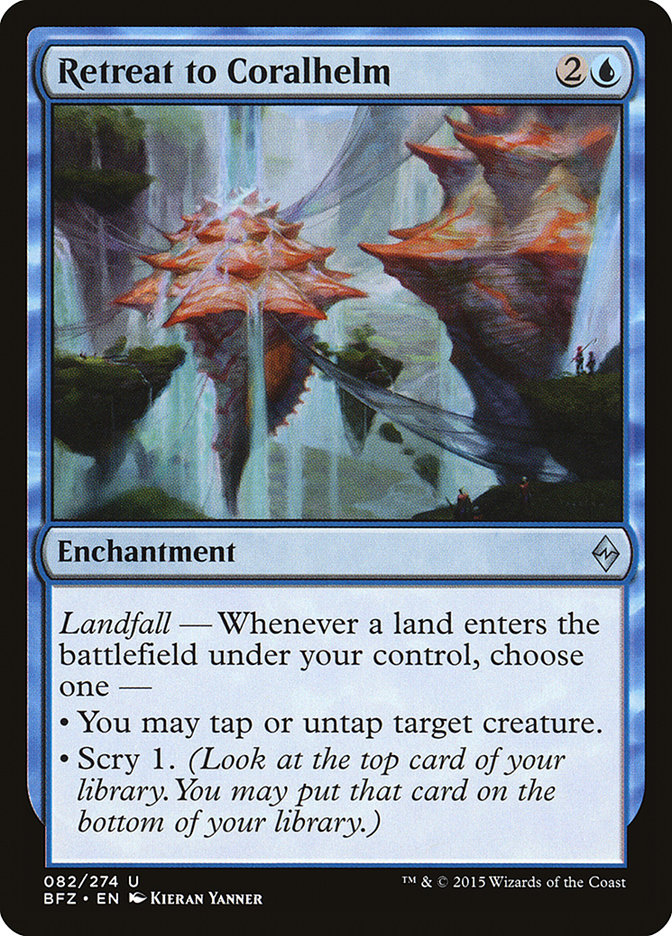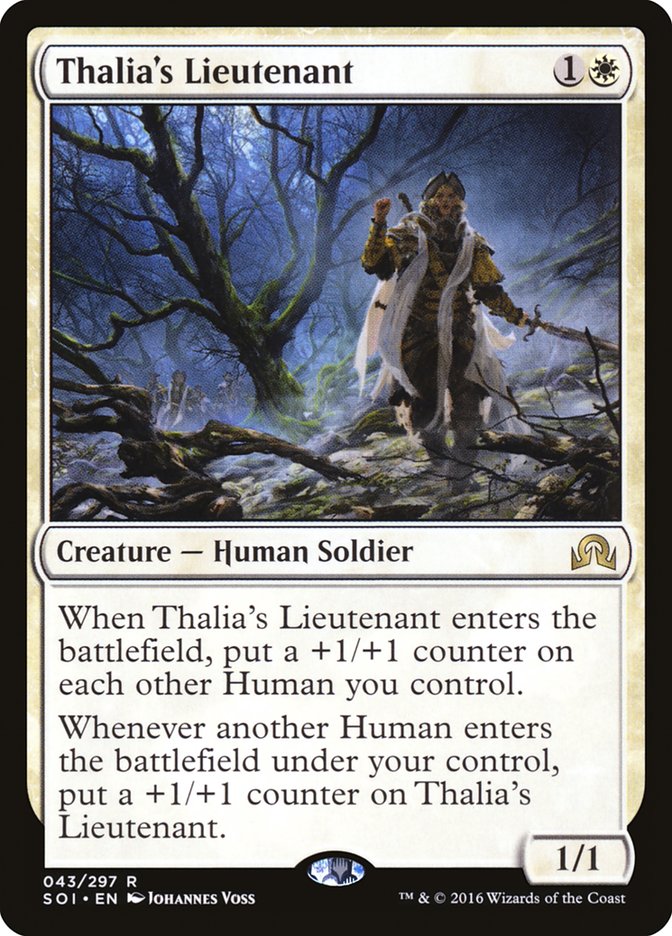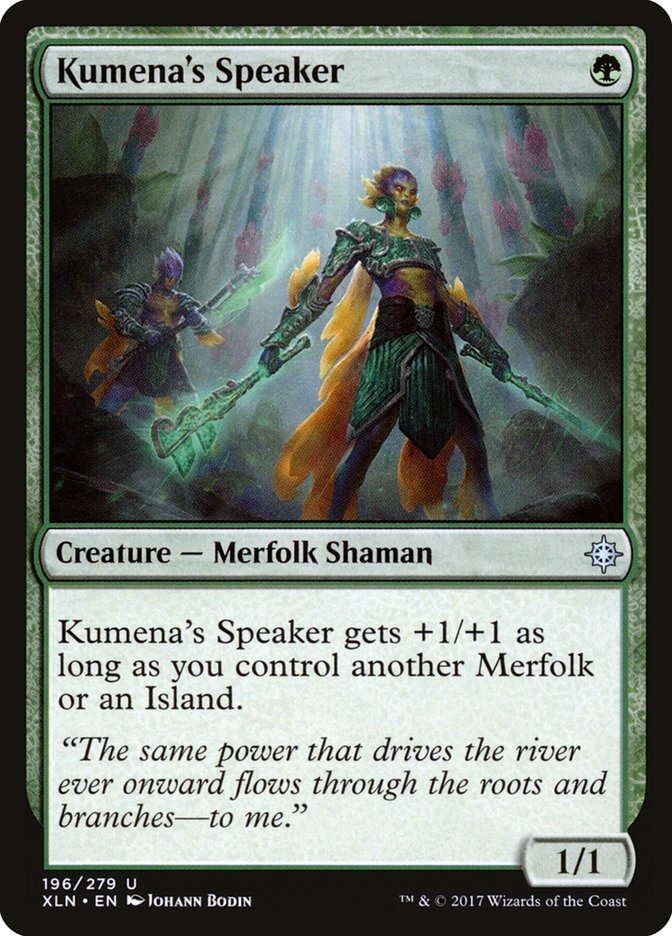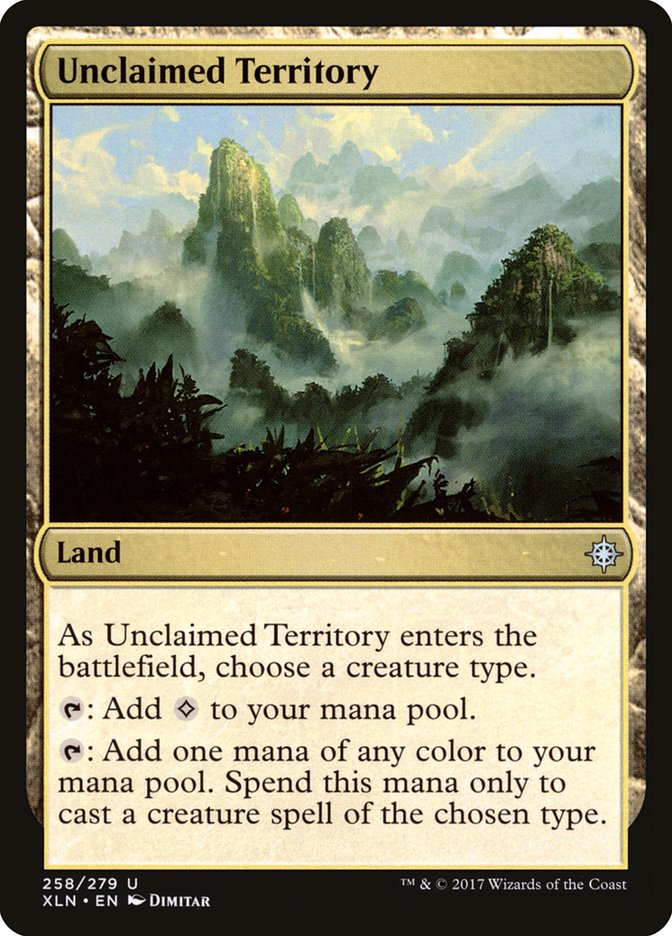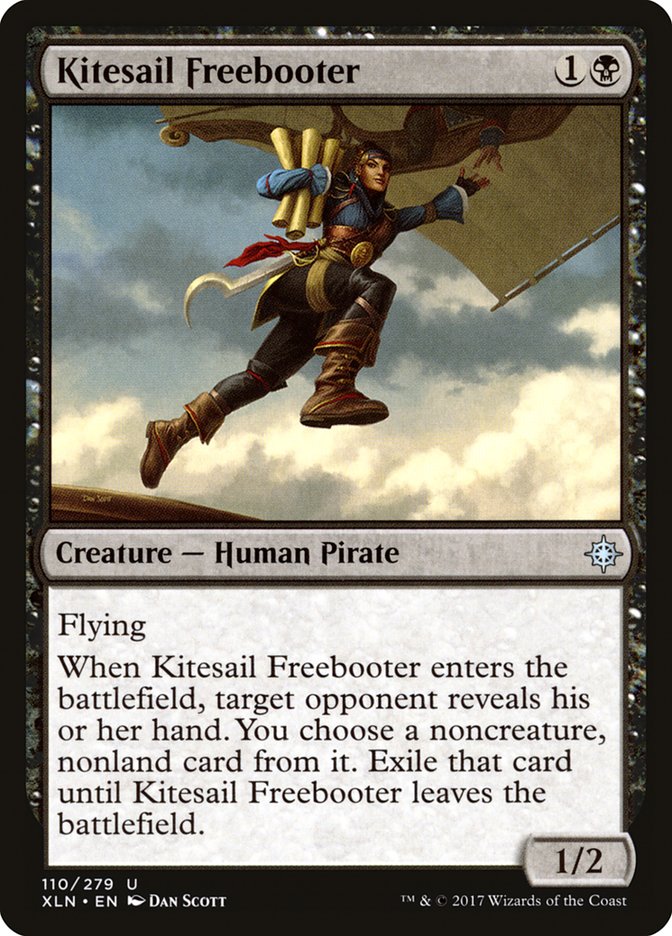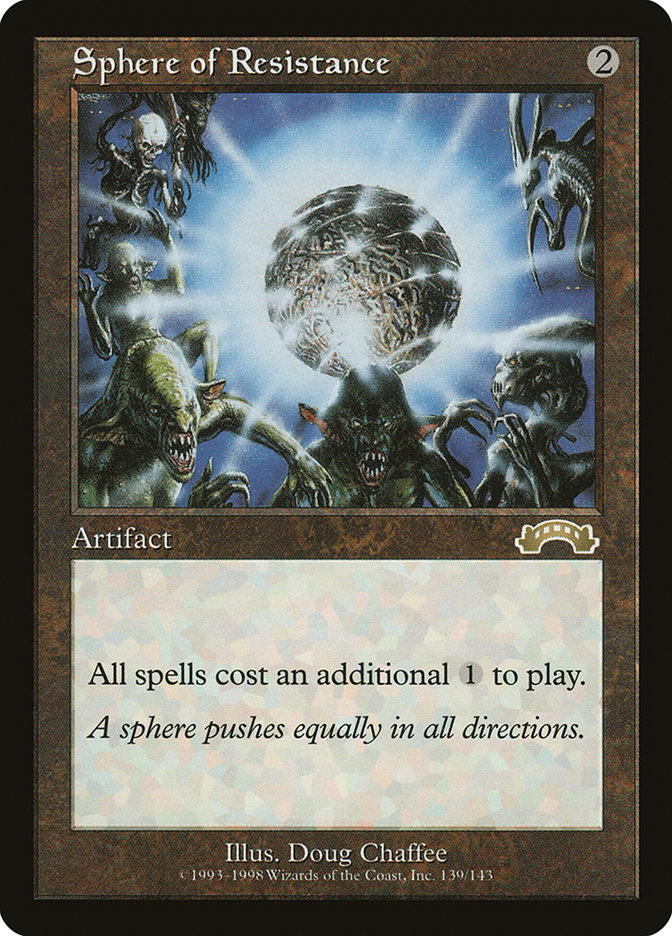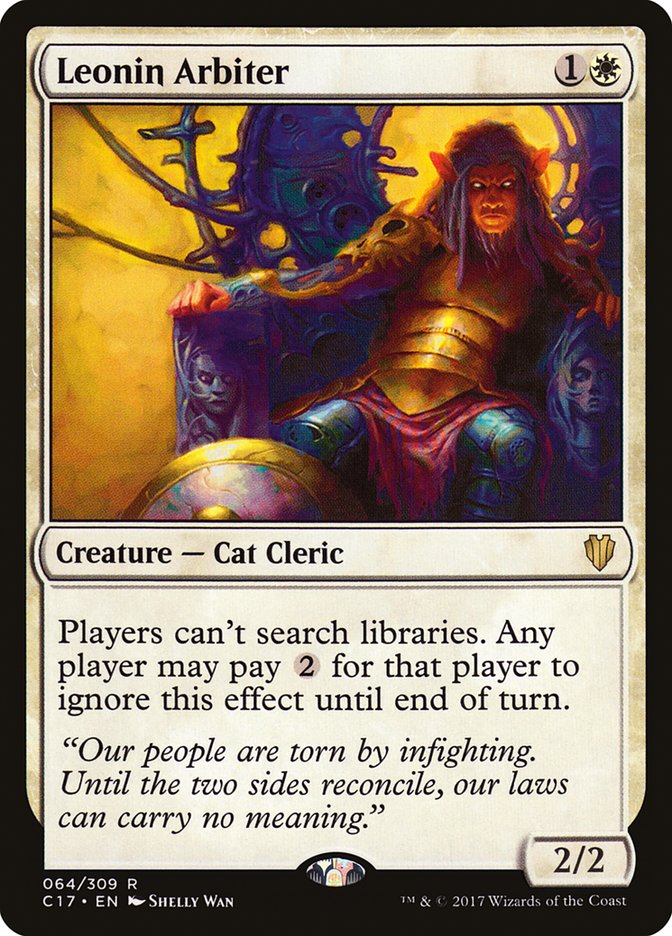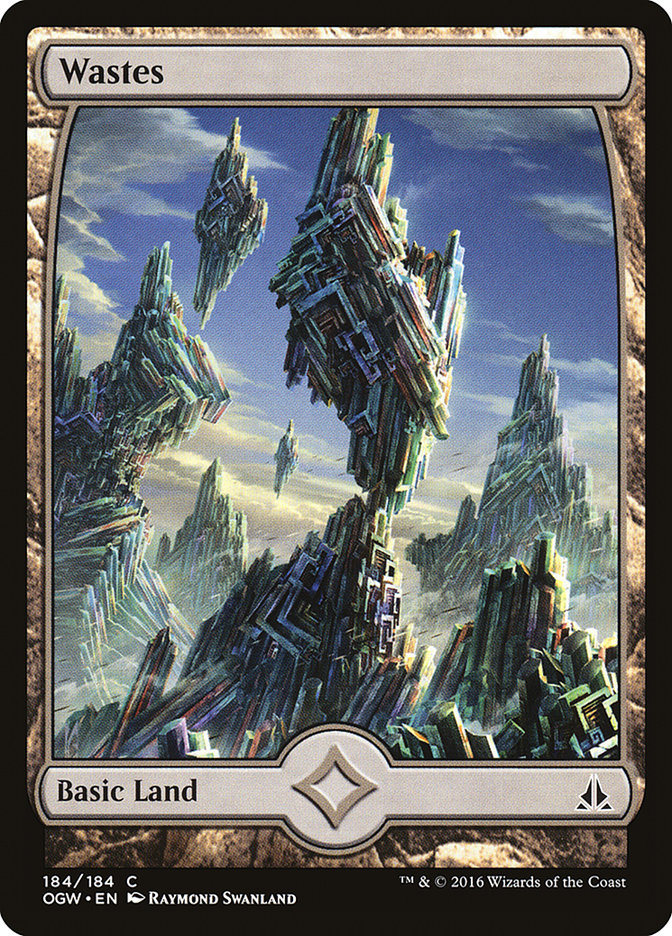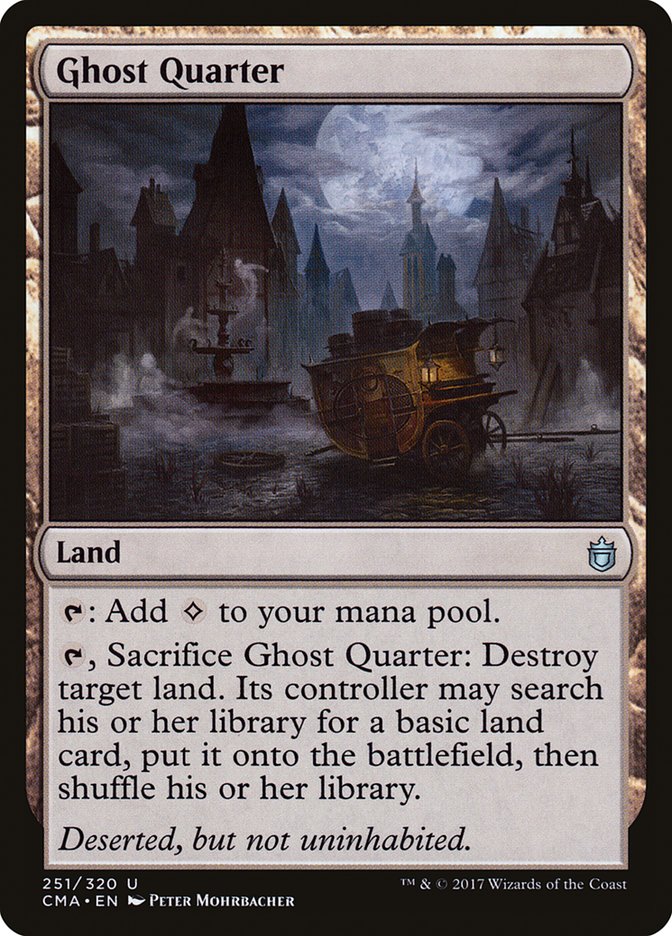About a year ago, I tried to condense the many headed monster that is Modern down to more manageable concepts. I then took the same approach to covering generalized matchups.
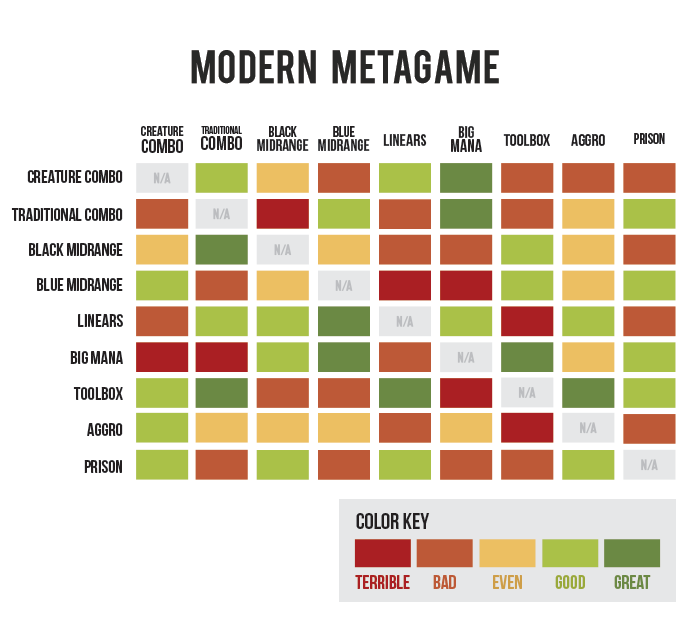
Last week, I used the same broad strokes to show how you can be better at Modern than Brennan DeCandio and build good sideboards. During that Flashback, I noticed a fair amount had shifted since last winter. Not truly changed, but there were adjustments to be made.
This is a high-level list of how all of the major Modern macroarchetypes have shifted over the last year, as well as a dive into how that has changed individual matchups.
Black Midrange
Where do we even start?
Black Midrange is basically just Death’s Shadow now. Some people think you can Lingering Souls and Abzan people, but you really can’t. You can choose your colors, but it’s all moved in the same direction. This was the capital Best Deck for most of the year because it got so much better. Its threats are better, and its answers are better. The entire format had to adjust over months, and even now it’s still a Tier 1 deck that imposes huge constraints on the format.
Black Midrange vs. Big Mana: Okay, previously Terrible.
The added speed of Death’s Shadow really changes this matchup. If you make them stumble, they die. Sometimes they have the nuts, but sometimes they don’t. Welcome to the Tron/Valakut life. Do a thing, hope it’s good. That’s all I got.
The shift in threat bases also hurt Big Mana’s ability to win off subpar hands. Previously every reasonable clock Black Midrange could present died to Anger of the Gods or got shut down by Relic of Progenitus. That just isn’t the case anymore. Anger of the Gods basically does nothing, while Relic of Progenitus can be oddly ineffective against Tasigur, the Golden Fang as it is so easy for the delving deck to outpace a card at turn to the graveyard and force you to use the full exile mode too early.
Okay, maybe there’s another Black Midrange deck, but it’s also solid against big mana. Shockingly, loading up on discard and playing land destruction makes you good against the deck that relies on having lands on the battlefield and relies on using lots of cards to make more lands.
Black Midrange vs. Blue Midrange: Oddly Still Okay.
Despite cutting a bunch of heavy-hitter two-for-ones, this matchup is still just close. You are no longer playing cards that play horribly against Cryptic Command and their answers didn’t get better. It’s tempo versus control and not midrange versus control so it’s a little more precise, but we have seen this. Andrew Jessup is going to win the matchup.
Black Midrange vs. Prison: Bad but Closer.
The Prison decks are just different. Random removal and clunky four-drops are now forced to be Chalice of the Void or Ghost Quarter as Strip Mine. They have to be faster because you are.
In theory they are favored against you, but in practice a lot of the classic Black Midrange stuff takes over. Prison without card filtering or an inherent tutor engine is inherently inconsistent, and Thoughtseize makes it more so.
Note that this is probably why the old Skred Red or W/R style Prison decks died out. Too many games of having a hand full of four-drops against Death’s Shadow decks leads you to throw your deck in the trash in a hurry.
Creature Combo
I’m talking about this archetype early because it was so important last year, but if I reorderd everything by importance, it would fall to the bottom. Creature combo all but disappeared for the last year, with only the recent #SCGCIN results showing a small resurgence of the archetype.
While the Gitaxian Probe ban might seem like the reason, it really isn’t. The same speed is available with Street Wraith, and the info is good but a bit of a crutch.
The real issue is Fatal Push. You can’t retrick through their cheap removal with Mutagenic Growth anymore. You can’t juke to Phyrexian Crusader. Even if you knew it was there, your stuff would just die.
Creature Combo vs. Black Midrange: Terrible, previously Even.
Or maybe the issue is just the whole Death’s Shadow deck. You can’t get under them like Jund; you aren’t more efficient than they are. They have opted to spend life instead of mana against your deck that is really not trying to interact with life totals in the same way as traditional aggro. The matchup is now actively horrific. Good luck, have fun.
You are also soft to the reaction to Death’s Shadow. Lingering Souls and Chalice of the Void are hassles for Death’s Shadow and disasters for you. Oh yeah, and the one deck that has four Walking Ballista. That sucks.
Creature Combo vs. Traditional Combo: Bad, previously Good.
One of your actively good matchups also flipped. The jump to Gifts Storm means they are more reliably fast and more able to spend resources fighting back, like short Grapeshots. Or Living End just becoming way scarier with Amonkhet, which is potentially winnable but not fun at all.
Creature Combo vs. Toolbox: Better, but on them to win.
The one upside is that toolbox matchups no longer play a bunch of a full freeroll hate card. Selfless Spirit has also largely usurped Spellskite. You still have to slog through the rest of their nonsense, but even then Izzet Staticaster isn’t a lock and they have what, one Walking Ballista? If they want to beat you, they will, but they have to try.
Blue Midrange
This is exactly the same deck as it was a year ago. I just want to say Spell Queller is great. Good chat, see you this time next week for the same stuff.
Traditional Combo
Traditional Combo has started to become more like Splinter Twin. It isn’t quite a fair deck with a combo spliced in, but a heavy combo deck with a solid amount of interaction isn’t that far off. Storm came at it by the chain of Baral, Chief of Compliance unlocking Gifts Ungiven, which reduced the number of cards you need to kill and pushed you towards Remand and being able to spew Grapeshots. Living End came at it by getting a real clock. Ad Nauseam always had interaction in its own weirdo way.
We are going to drift even further in this direction with Opt letting you set up previously less consistent combo decks filled with normal spells. Through the Breach / Emrakul, the Aeons Torn and the weird Polymorph / Umbral Mantle deck are what we have seen so far, but I expect more options in this category to be discovered over the next couple months.
Traditional Combo vs. Toolbox: No Auto-Losses, now just normal Bad, not Terrible.
While your specific removal might not hit Eidolon of Rhetoric, it does cleanly answer a lot of the other cards Toolbox might try to deploy against you. Thalia, Guardian of Thraben barely matters anymore, Spell Queller is good but manageable, and graveyard hate creatures are similarly annoying but beatable. More on this in the Toolbox section, but you no longer just auto-lose when they fire a Chord of Calling.
Traditional Combo vs. Linears: Good, previously Bad.
The Linear decks used to be the faster decks with interaction in the Traditional Combo matchup. Now Affinity is often reduced to nothing by Storm and forced to scramble to close out games and Dredge is definitely slower. Lantern… is just Lantern. Stuff happens or something. I’m not actually sure; the deck creates some of the most unmemorable games of Magic possible because countless actions take place that all look like they matter, so knowing what actually mattered is difficult. Note this is the same exact thing as discussed in the Creature Combo section, but made even worse by sideboard hate.
Linears
None of the linear decks gained a lot over the last year. Kaladesh wasn’t a hard artifact block like Mirrodin or Scars of Mirrodin, Amonkhet was barely a graveyard block, and we only just got back Lightning Strike, let alone a Modern-playable Burn card. As a result, things have been really dicey for these decks. Their matchups aren’t distinctly different from before, but everything else just stepped their game up a notch.
I wouldn’t update the chart too much for it, but just be aware that Affinity, Lantern, and Dredge are now in the category of “occasionally good to play” instead of their old haunt of “sometimes bad because everyone hates you.”
Big Mana
Big Mana hasn’t fundamentally changed over the last year. There isn’t a new Primeval Titan or Urza’s Tower. The changes have been superficial facelifts, upgrades to interaction like Anger of the Gods or Fatal Push. Making your twentieth enabler card into something with more non-goldfish impact like Khalni Heart Expedition as a two-for-one. Just finding a better third-best way to end the game, like Hour of Promise or Through the Breach.
You still have the same amount of interaction though and the same fundamental Turn 4 before you do something super-impactful and the same fail rate due to needing lands and spells in a certain ratio. There are no big-picture changes, just minor blips where a specific narrow matchup is a little easier.
Toolbox
Amonkhet really brought a shift in what was going on with Toolbox strategies. I’m unsure this wouldn’t have happened to some extent without Vizier of Remedies, but that card forced it to happen.
Previously you had Melira Company decks that were largely combo- or hatebear-based, but with significant beatdown capability via Voice of Resurgence or Kitchen Finks. You then had Kiki Chord decks that killed a lot with combo but often won via Pia and Kiran Nalaar getting Restoration Angeled and grinding people to death.
Vizier of Remedies forced the combo-based decks to move hard down the combo line. Neither Devoted Druid nor Vizier lets you beat down the way Kitchen Finks or Anafenza, Kin-Tree Spirit does, so you may as well just combo as hard as possible.
Death’s Shadow pushed the non-combo lists in the other direction. You couldn’t afford to play clunky but reliable combo pieces like Kiki-Jiki, Mirror Breaker, leaving the surviving non-combo Toolbox deck as Knightfall. The deck can combo, but it’s really more of a Spell Queller / Tireless Tracker midrange deck with notes of hatebears.
Both versions of the deck have significantly more broad-spectrum power. Devoted Druid threatens wins from basically nothing. While the deck isn’t that much faster than Melira Company, it just puts the fear into people by doing one thing or leaving up a Collected Company with basically nothing else. If you aren’t playing Fatal Push, it’s actually really annoying and almost Splinter Twin-esque to face down this deck. On the other side with Knightfall or Humanfall or whatever, I’m just going to tell you Spell Queller is great.
That said, moving to the extremes makes the decks much less flexible. If your opponent is playing cheap removal, Counters Company has real issues. If your opponent’s cards don’t get hit by Spell Queller or Reflector Mage, Knightfall really has to hope it draws Retreat to Coralhelm or a sideboard card. Knightfall lacks Chord of Calling, which again further condenses the Toolbox elements you have reliable access to.
Basically, the Toolbox decks are really good at beating about two-thirds of the metagame on a given week, and you can choose exactly what you want to do. But that last third is going to be rough. As a result it’s not worth talking too much about matchups, but just to be aware that what I said about the creature combo matchup almost applies everywhere. Even the Big Mana matchup, previously the consistent scourge of Toolbox decks, is “solved” by just killing them on Turn 3.
If any deck in Modern falls into Brennan DeCandio’s ideology of sacrificing twelve matchups, it’s Toolbox, but that’s kinda the point. Most importantly, you have a wide array of choices and can make anything happen.
Note: The chart at the start of this article uses matchups for a Counters Company-style Toolbox deck. Knightfall swaps the Midrange matchups for the Linear and Big Mana ones, but you can probably end up somewhere in the middle too.
Aggro
Similarly to Creature Combo, Aggro has been having a bit of a rough time this calendar year. The brief shining moments were when the deck blurred the lines with other archetypes: W/G Hatebears bridging with Prison, Bant Humanfall bleeding into Toolbox. No matter what Cedric Phillips tried to tell you, there was no hope for Reckless Bushwhacker.
Unlike Creature Combo, Aggro’s resurgence at #SCGCIN was not due to a brief metagame gap. Ixalan brought large gains for both Humans and Merfolk. Aggro is now an archetype of raw creature quantity, not a mix of quantity and quality.
Ultimately this doesn’t mean a lot in terms of matchups. Aggro is still only loosely interactive, moderately fast, and soft to dense removal suites and big opposing threats. It just means that the exact cards you use to fight Aggro are a bit different. Lightning Helix is less important than in the Wild Nacatl days, Anger of the Gods and Supreme Verdict more so. In fact, this might be an all-time low point for Lightning Helix, which would point towards good times for Burn whenever the 30 other unbeatable cards like Collective Brutality also die down.
Note that, while it does seem like Collins Mullen’s Humans decks represents a huge shift in how these decks can interact, it really just caught people who weren’t ready that week. The decks that lose to Kitesail Freebooter or Meddling Mage can mostly adjust to not do so, though I may be talking more about Meddling Mage than Freebooter here.
When in doubt, play Snapcaster Mage and kill more of their stuff. Hard to attack when you don’t have attackers.
Prison, previously Bulky Midrange
It shouldn’t be surprising that the previous newest archetype is now the most changed. It’s not that people didn’t try to build Prison decks for basically all of Modern’s existence, but they all failed miserably until late last year. My guess is clearing Splinter Twin opened up a lot of ground here, and it took a bit post-Eldrazi Winter for everything to resolve itself.
Modern Prison isn’t remotely the same as Legacy or Vintage Prison. A lot of stupid cards were printed in a bunch of different ways early on in the game, both in the fast mana department and the “players can’t play the game” department. As a result, I never associated Modern Prison with the consistent lockouts of old-school Prison decks and didn’t label it the same way.
These decks are definitely Prison decks. If it was unsure then, it’s clear now after a year of facing them.
Modern Prison is more about a singular uniquely game-shattering effect that you hope to back up with cards that are passable when it doesn’t work. Find the most powerful thing that shutters the metagame, and then try to pull that off in some semi-consistent manner.
As mentioned in the Black Midrange section, the pressure of better decks forced Prison to change from the clunky nonsense it was before to something else. It still isn’t consistent, but it is inconsistent in forms that do things if you don’t run out your main hate sequence.
Well, sometimes do things.
If you want to further develop the Modern Prison archetype, the thing you should be looking for is the best semi-inconsistent shell to splice with your on0point hate card. It should be something that operates fine when you mulligan garbage hands, or something where those garbage hands are half-passable, but beyond that it doesn’t matter much.
When fighting back, the best thing you can do is lean on that inconsistency. These decks have a known fail rate. Anything that pushes back on that really makes their hands fall apart. You can also just dodge their hate, but that’s easier said than done if your opponent did a good job of selecting their deck.
***
Overall, Modern is still a very familiar format compared to last year despite bans, crazy win streaks by new decks, and a lot of relevant cards being introduced. I wouldn’t call it stagnant, as a lot has happened, but the format is settling into something broader than the Twin versus Jund versus Weird Deck rut it was stuck in for a couple of years.
That’s a really good thing when you think about it, as broadness makes it so new sets can have the highest impact. There isn’t anything ubiquitous on the Brainstorm or Wasteland level, so unique effects matter. I expect to be writing this same article in late 2018, and that’s something I can definitely get behind.




